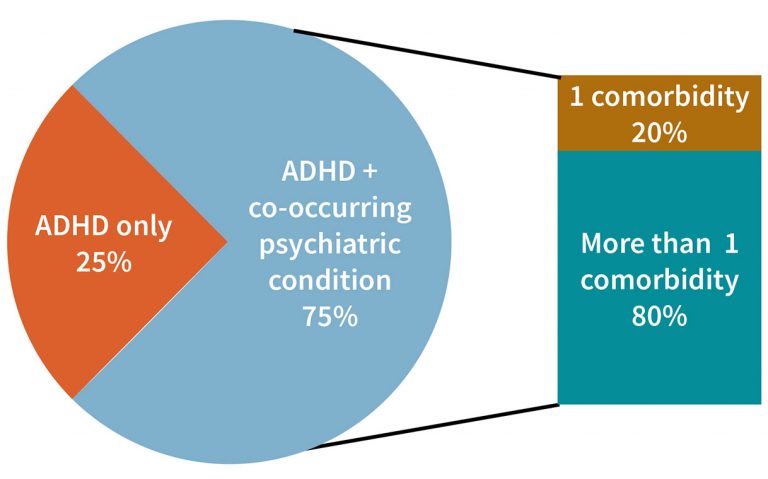The UK's Autism And ADHD Prevalence: Could You Be One Of 3 Million+?

Table of Contents
Understanding the Prevalence of Autism in the UK
Statistical Data on Autism Prevalence
The prevalence of autism in the UK is a significant public health concern. While precise figures vary depending on the methodology and year of study, numerous reports suggest a substantial number of individuals are affected. The NHS and organizations like Autism Speaks provide valuable data, though it's crucial to understand the limitations of these figures.
- Estimates suggest that around 1 in 100 children are diagnosed with autism spectrum disorder (ASD).
- Diagnosis rates are significantly higher in boys than girls, although this may reflect diagnostic bias rather than a true difference in prevalence.
- The prevalence of autism in adults is also increasing, as awareness grows and more adults seek diagnosis.
It's important to acknowledge that these statistics might underestimate the true prevalence. Many individuals remain undiagnosed, particularly adults, due to a lack of awareness or access to diagnostic services. Variations in diagnostic criteria across different regions and healthcare providers can also contribute to inconsistencies in the data.
Factors Contributing to Increased Autism Diagnosis Rates
The rise in autism diagnosis rates in the UK is a complex issue with multiple contributing factors:
- Increased Awareness: Greater public awareness of autism has led to more parents and adults seeking professional assessment.
- Improved Diagnostic Tools: Advances in diagnostic tools and assessment techniques have led to more accurate and earlier diagnoses.
- Changes in Diagnostic Criteria: Revisions to diagnostic criteria for autism may have broadened the definition, potentially leading to higher diagnosis rates.
- Improved Access to Support Services: Increased availability of support services may encourage more individuals to seek diagnosis and support. It's important to note that the potential role of environmental factors in autism prevalence is a subject of ongoing research and requires further investigation.
Understanding the Prevalence of ADHD in the UK
Statistical Data on ADHD Prevalence
Attention-deficit/hyperactivity disorder (ADHD) is another prevalent neurodevelopmental condition in the UK. Again, accurate figures are challenging to obtain, but various studies offer valuable insights.
- Estimates suggest that ADHD affects approximately 2.5% of children in the UK.
- The prevalence of ADHD in adults is also substantial, although it's often underdiagnosed.
- There are some indications that ADHD is more frequently diagnosed in boys than girls, although similar diagnostic bias concerns exist as with autism.
As with autism, data on ADHD prevalence is subject to variation depending on the diagnostic criteria used and the population studied.
Factors Contributing to Increased ADHD Diagnosis Rates
The increased diagnosis rate of ADHD mirrors the trends seen in autism:
- Increased Awareness: Greater public and professional awareness has led to more referrals and diagnoses.
- Improved Diagnostic Tools: Developments in assessment methods have improved diagnostic accuracy.
- Changes in Diagnostic Criteria: Evolving diagnostic criteria may have impacted the number of diagnoses.
- Societal Factors: Changes in societal expectations and pressures may contribute to increased recognition and diagnoses of ADHD.
The Challenges of Diagnosis and Support in the UK
Accessing Diagnostic Services
Navigating the system to receive an autism or ADHD diagnosis in the UK can present significant challenges:
- Waiting Lists: Long waiting lists for assessments are common, leading to delays in diagnosis and access to support.
- Geographic Variations: Access to specialist services varies significantly across the UK, with some areas having better resources than others.
- Cost of Private Assessments: The cost of private assessments can be prohibitive for many families.
The Importance of Early Intervention and Support
Early intervention is crucial for both autism and ADHD:
- Improved Outcomes: Early diagnosis allows for timely intervention, leading to improved outcomes for individuals.
- Reduced Long-Term Impact: Early support can reduce the long-term impact on individuals, families, and society.
- Educational and Therapeutic Support: Early access to educational and therapeutic support can significantly improve an individual's life chances.
Resources and Support for Individuals with Autism and ADHD in the UK
National Organizations and Charities
Several national organizations offer valuable support, information, and resources for individuals with autism and ADHD and their families:
- [Link to National Autistic Society]
- [Link to ADHD UK]
- [Link to other relevant charities]
Government Initiatives and Funding
The UK government has implemented various initiatives to support individuals with autism and ADHD, including funding for research, diagnostic services, and support programs. Information on these initiatives can be found on the government's website.
Conclusion
The prevalence of Autism and ADHD in the UK is substantial, affecting millions of individuals and their families. While the rising diagnosis rates reflect increased awareness and improved diagnostic tools, accessing timely and appropriate support remains a significant challenge. Early intervention is crucial for maximizing positive outcomes. Understanding the Autism and ADHD prevalence in the UK is a crucial step towards providing better support and improving the lives of those affected. Learn more about Autism and ADHD prevalence in the UK and find support resources today. Visit [link to relevant resource] to find help and information relating to understanding Autism and ADHD prevalence and getting the support you need.

Featured Posts
-
 Families Ordeal The Prolonged Gaza Hostage Crisis
May 13, 2025
Families Ordeal The Prolonged Gaza Hostage Crisis
May 13, 2025 -
 Evropska Expanze Byd Vyzvy A Reseni
May 13, 2025
Evropska Expanze Byd Vyzvy A Reseni
May 13, 2025 -
 Hikmah Dari Pendekatan Sby Resolusi Konflik Myanmar Yang Damai
May 13, 2025
Hikmah Dari Pendekatan Sby Resolusi Konflik Myanmar Yang Damai
May 13, 2025 -
 Cordens Comeback Confirmed New Project With Sir Ian Mc Kellen And Baby Reindeer Star
May 13, 2025
Cordens Comeback Confirmed New Project With Sir Ian Mc Kellen And Baby Reindeer Star
May 13, 2025 -
 Analiz Obnovlennykh Standartov Po Fizike I Khimii V Doshkolnom Obrazovanii
May 13, 2025
Analiz Obnovlennykh Standartov Po Fizike I Khimii V Doshkolnom Obrazovanii
May 13, 2025
